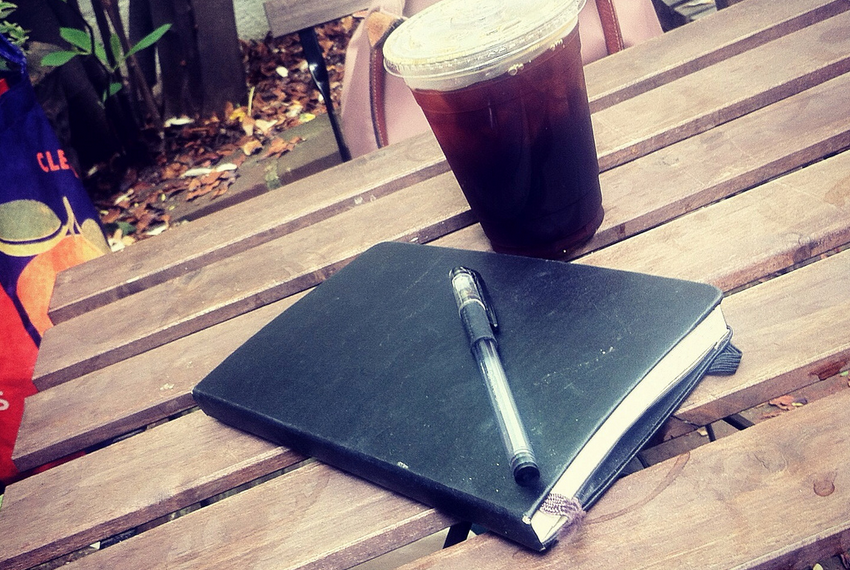Writing Critically About Things
A good reading is life affirming. I'll one up that: a critical reading creates life! It takes what you think you're seeing, what you think is done, and shows you whole other worlds.


There are a lot of ways to approach writing about a book, a painting, a piece of music, or even a chair, landscape, idea, relationship.
You could try to place that individual work within the history of the medium. Borges takes up Cervantes’ mantle by introducing an unreliable author. Or Picasso, for all his modernist trappings, continues the great Romantic tradition of representing the world through the soul of the painter. Of course, neither of these readings is engaging, accurate, or interesting. But their form is all too familiar for anyone who’s taken English or art history in college.
You could put aside the medium all together and place the book within cultural and historical context. Norman Mailer may look staid today but, at the time, he challenged reigning paradigms of literary protocol. Or Joan Didion represented a seminal moment in the history of American women of letters. I made both of these up having read neither but, again, their form should be familiar.
A common mode of critique for the past 20 or so years is ideology critique: This book is an example of Marxism! Of Oedipus! Or patriarchy! Of third wave feminism! These are actually all the same mode as they see books and art as symptoms and examples of something bigger, something greater — history, concepts, ideas, ideology.
You could jettison this whole approach and write autobiographically, narrating the ways this or that work affected you, the role it played in your life, how it changed you, influenced you, moved you. When I first heard “Blonde on Blonde,” I was 14 and sitting on the cabin floor and I knew my life would never be the same.
All of these modes might or might not make interesting reads, might or might not cast some light on the object at hand. But, for the most part, they skip over the head of the work, choosing to write about something else, something that seems more grand. I’d call this over reading.
It always seemed to me that to say how a text — a book, work of art, music, dance, a plate for that matter — is a symptom or example of something else reduced it. And it begged the question: whence the concept for which this is an example? For instance, if I want to say that Philip Roth’s Portnoy’s Complaint is patriarchic, what is patriarchy made of if not Portnoy’s Complaint? There seems to be a basic logical problem here in which the idea — in this case, patriarchy — is considered to exist before all of its instantiations.
This is more explicit when we consider genre. If I say The Crying of Lot 49 is an example of postmodern literature, doesn’t this beg the question: isn’t postmodern literature made of all the books we say are postmodern literature, including Pynchon’s proclaimed novella? The genre does not — cannot — precede the books. Take away the books and you take away the genre. To call it an example, then, is a tautology of the least interesting sort.
To write critically about something is to take readers on an exquisite, exciting, surprising tour of the thing. Step right this way, all, and notice this, then that, look out for that over there, now let’s swing around here.
I want to say that a thing — a book, a work of art, a chair, your dog’s face, your relationship with your sweetie — is not self-explanatory. But, in a way, it is self-explanatory only these self explanations are multiple. Every thing declares itself over and over again, continuously and continually. I go like this! I do this and this and that and this other thing! You don’t need to bring anything to the text. (Text and thing are more or less the same to me. I believe the distinction I’d make is that a thing things while a text is that thing qua its readability. That’s the first time I’ve used qua since grad school, I think. It felt good.)
This is all to say a thing — a text — doesn’t need a theory to read it. Things exist without psychoanalysis, without rhizomes, without feminism, without Marx just as they necessarily exist with psychoanalysis, rhizomes, feminism, and Marx. A chair, for instance, exists with everything else that exists or might exist or has existed — my ass, other chairs, my little boy, Marxism, the concept of love, pretzel crumbs, wind, waves, sunsets, dreams, death.
Every thing does what it does in a shifting calculus of relations, speeds, and intensities. Think about a movie such as, say Rushmore. It’s alternately and simultaneously a testament to precocity, adolescence, middle age, love, grief, narrative, the relationship between film and literature; meanwhile, its mood shifts between and amongst joy and melancholy, humor and what we often call drama, not to mention a bevy of other affects for which I don’t have the words.
A thing is multiple and more or less complex. The critical reader — the critical writer — shows other readers things that might have been missed by most folks and how these elements are interesting. This critic implicitly declares: Come with me and I’ll show you the ways in which I find this thing really freakin’ interesting. It might not always be obvious; I may show you things and relations between things you might not have considered. But, in the end, I hope you’ll enjoy the ride.
It doesn’t matter whether you, as the writer, like the thing you’re reading. Well, it doesn’t matter to your reader. Your judgment as a critic is, frankly, irrelevant. There’s rarely a point in saying Nietzsche brilliantly uses metaphor or Wes Anderson’s genius is unrivaled (eeesh!). Who cares? What we, your readers, care about is whether you can show us things, make us see connections we might never have seen, words we might never have noticed, ideas we didn’t even know were there.
A good reading is life affirming. I’ll one up that: a critical reading creates life! It takes what you think you’re seeing, what you think is done, and shows you whole other worlds. I remember years and years ago now — multiple decades, in fact — watching a tiger pace in his cage at the zoo. And rather than think, How sad that he’s trapped! I thought: Look at this master who transforms his finite cage into an infinite savannah! Both readings engage the same text but one regurgitates the familiar while the other discovers a different universe. It’s irrelevant for the moment if one or the other is right or wrong. What matters is whether it’s interesting, whether it makes you see anew.
For that is the task of the critical writer: to show how the world is more exciting, beautiful, exquisite, and interesting than you’d previously thought. ![]()




